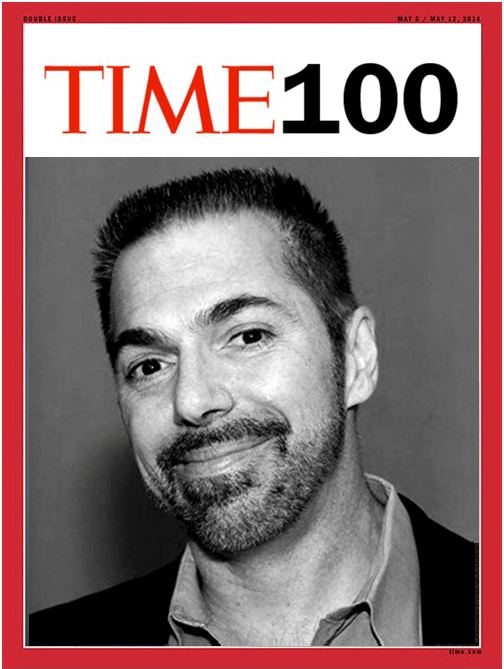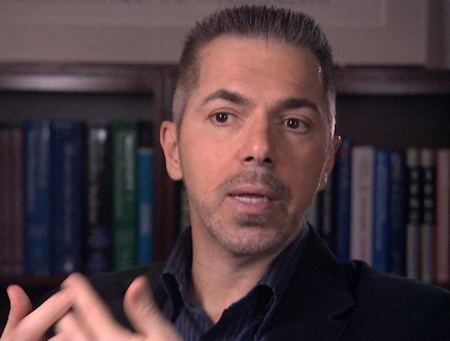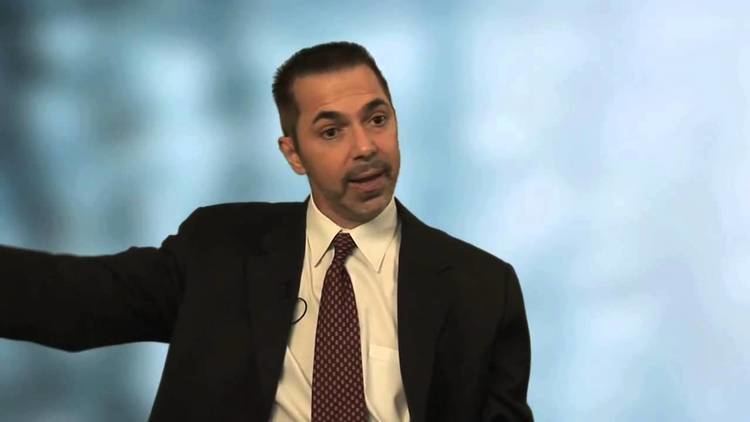Nationality American Name Robert Lanza | Role Scientist | |
 | ||
Institutions Ocata Therapeutics, Inc. Wake Forest University School of Medicine Books Biocentrism: How Life and Consciousness Are the Keys to Understanding the True Nature of the Universe | ||
Robert lanza on theory of biocentrism
Robert Lanza (born 11 February 1956) is an American medical doctor and scientist. He is currently Head of Astellas Global Regenerative Medicine, and is Chief Scientific Officer of the Astellas Institute for Regenerative Medicine and Adjunct Professor at Wake Forest University School of Medicine.
Contents
- Robert lanza on theory of biocentrism
- Robert lanza on theory of biocentrism part 2
- Early life and education
- Stem cell research
- Clinical trials for blindness
- First published reports of embryonic stem cells in humans
- Biocentrism
- Awards and public commentary
- Publications
- Books
- References

Robert lanza on theory of biocentrism part 2
Early life and education

Lanza was born in Boston, Massachusetts, and grew up south of there, in Stoughton, Massachusetts. Lanza "altered the genetics of chickens in his basement," and came to the attention of Harvard Medical School researchers when he appeared at the university with his results. Jonas Salk, B. F. Skinner, and Christiaan Barnard [needs citation] mentored Lanza over the next ten years. Lanza attended the University of Pennsylvania, receiving BA and MD degrees. There, he was a Benjamin Franklin Scholar and a University Scholar. Lanza was also a Fulbright Scholar. He currently resides in Clinton, Massachusetts.
Stem cell research

Lanza was part of the team that cloned the world's first early stage human embryos, as well as the first to successfully generate stem cells from adults using somatic-cell nuclear transfer (therapeutic cloning).

Lanza demonstrated that techniques used in preimplantation genetic diagnosis could be used to generate embryonic stem cells without embryonic destruction.
In 2001, he was also the first to clone an endangered species (a Gaur), and in 2003, he cloned an endangered wild ox (a Banteng) from the frozen skin cells of an animal that had died at the San Diego Zoo nearly a quarter-of-a-century earlier.
Lanza and his colleagues were the first to demonstrate that nuclear transplantation could be used to reverse the aging process and to generate immune-compatible tissues, including the first organ grown in the laboratory from cloned cells.
Lanza showed that it is feasible to generate functional oxygen-carrying red blood cells from human embryonic stem cells under conditions suitable for clinical scale-up. The blood cells could potentially serve as a source of “universal” blood.
His team discovered how to generate functional hemangioblasts (a population of "ambulance" cells) from human embryonic stem cells. In animals, these cells quickly repaired vascular damage, cutting the death rate after a heart attack in half and restoring the blood flow to ischemic limbs that might otherwise have required amputation.
Recently, Lanza and a team led by Kwang-Soo Kim at Harvard University reported a safe method for generating induced pluripotent stem (iPS) cells. Human iPS cells were created from skin cells by direct delivery of proteins, thus eliminating the harmful risks associated with genetic and chemical manipulation. This new method provides a potentially safe source of patient-specific stem cells for translation into the clinic. Lanza and Advanced Cell Technology expect to start the process for regulatory approval of what experts said would be the first human trial involving induced pluripotent (iPS) stem cells created by reprogramming adult cells back to an embryonic-like state. They want to test blood-clotting particles, called platelets, made from such reprogrammed cells. Platelets don't carry the risk of genetic defects because they don't have DNA.
Clinical trials for blindness
Lanza’s team at Advanced Cell Technology has succeeded in getting stem cells to grow into retinal cells. With this technology, some forms of blindness may be curable, including macular degeneration and Stargardt disease, currently untreatable eye diseases that cause blindness in teenagers, young adults, and the elderly.
Advanced Cell Technology has received approval from the Food and Drug Administration for human trials using human embryonic stem cells to treat degenerative eye diseases. This treatment for eye disease uses stem cells to re-create a type of cell in the retina that supports the photoreceptor cells needed for vision. These cells, called retinal pigment epithelium (RPE), are often the first to die off in age-related macular degeneration and other eye diseases, which in turn leads to loss of vision. Several years ago, Lanza’s team found that human embryonic stem cells could be a source of RPE cells, and subsequent studies found that these cells could restore vision in animal models of macular degeneration.
In recent studies, the same team of researchers showed that their stem-cell therapy provides a long-term benefit in animal models of vision loss. The retinal cells achieved near normal function in animals that otherwise would have gone blind.
In September 2011, Lanza’s company received approval from the UK's Medicines and Healthcare Products Regulatory Agency to begin the first human embryonic stem cell trial in Europe. Surgeons at Moorfields Eye Hospital in London will inject healthy retinal cells into the eyes of patients with Stargardt's macular dystrophy, hoping to slow, halt or even reverse the effects of the disease. The first person received the embryonic stem cell treatment earlier this year (2012). The patient reports improved vision in the eye treated with the cells, which The Guardian said “represents a huge scientific achievement.”
First published reports of embryonic stem cells in humans
Lanza and his colleagues at UCLA’s Jules Stein Eye Institute published the first-ever report of the medical use of human embryonic stem cells transplanted into human patients. The researchers initiated two prospective clinical studies to establish the safety and tolerability of subretinal transplantation of hESC-derived retinal pigment epithelium (RPE) in patients with Stargardt’s macular dystrophy and dry age-related macular degeneration.
After surgery, evidence confirmed cells had attached and continued to persist during the study. The researchers did not identify any signs of hyperproliferation, tumorigenicity, or ectopic tissue formation in either patient.
The patients who received the human embryonic stem cell transplants say their lives have been transformed by the experimental procedure. During the 4-month observation period neither patient lost vision. Best corrected visual acuity improved from hand motions to 20/800 (and improved from 0 to 5 letters on the Early Treatment Diabetic Retinopathy Study [ETDRS] visual acuity chart) in the study eye of the patient with Stargardt’s macular dystrophy, and vision also seemed to improve in the patient with dry age-related macular degeneration. One of the patients no longer needs a large magnifying glass to read and can reportedly thread a needle, and the other has begun to go shopping on her own. The future therapeutic goal of these studies will be to treat patients earlier in the disease processes, potentially increasing the likelihood of visual rescue.
In October 2014, Lanza and his colleagues published a follow-up paper in the journal The Lancet, providing the first evidence of the long-term safety and possible biologic activity of pluripotent stem cell progeny into humans with any disease. "For a nice two decades scientists have dreamt about using human embryonic stem cells to treat diseases,” said Gautam Naik, Science Reporter at The Wall Street Journal “that day has finally come…scientists have used human embryonic stem cells to successfully treat patients suffering from severe vision loss." RPE cells derived from embryonic stem cells were injected into the eyes of 18 patients with either Stargardt’s disease or dry-AMD. The patients were followed for more than three years, and half of them were able to read three more lines on the eye chart, which translated to critical improvements in their daily lives as well.
Biocentrism
In 2007, Lanza's article titled "A New Theory of the Universe" appeared in The American Scholar. The essay addressed Lanza's idea of a biocentric universe, which places biology above the other sciences. Lanza's book Biocentrism: How Life and Consciousness are the Keys to Understanding the Universe followed in 2009, co-written with Bob Berman. Reception for Lanza's hypothesis has been mixed.
Awards and public commentary
Lanza has received numerous awards and other recognition, including TIME Magazine’s 2014 Time 100 list of the "100 Most Influential People in the World", the 2013 “Il Leone di San Marco Award in Medicine” (Italian Heritage and Culture Committee, along with Regis Philbin, who received the award in Entertainment), a 2010 National Institutes of Health (NIH) Director’s Award for “Translating Basic Science Discoveries into New and Better Treatments”; a 2010 “Movers and Shakers” Who Will Shape Biotech Over the Next 20 Years (BioWorld, along with Craig Venter and President Barack Obama); a 2005 Wired magazine "Rave Award" for medicine “For eye-opening work on embryonic stem cells”, and a 2006 Mass High Tech journal “All Star” award for biotechnology for “pushing stem cells’ future”.
Publications
Lanza has authored and co-edited books on topics involving tissue engineering, cloning, stem cells, regenerative medicine, and world health.
